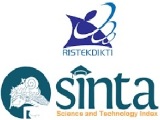Analisis Karakteristik Kalsium Karbonat (CACO3) sebagai Filler pada Campuran Aspal Panas
Abstract
Keywords
Full Text:
PDF (Bahasa Indonesia)References
Campuran, K., Aspal, B., & Aus, L. (n.d.). CaCO3---------------- Æ CaO + CO2.
Direktorat Jenderal Bina Marga. (2018). Spesifikasi Umum Jalan Bebas Hambatan dan Jalan Tol. 1013.
For, L., & Mixtures, A. (2007). Lime For Asphalt Mixtures. 33446–33447.
SNI 0013-81. (2004). Pelaksanaan perkerasan jalan beton semen. 1–32.
Kementrian Direktorat Jenderal Bina Marga. (2018). Spesifikasi Umum 2018. Edaran Dirjen Bina Marga Nomor 02/SE/Db/2018, September.
Marín, J., & Romaguera, S. (2012). Submetrizable Yoneda complete structures for a metric dcpo. AIP Conference Proceedings, 1479(1), 860–863. https://doi.org/10.1063/1.4756275
Menyelesaikan, D., Nugrahany, A. S., & Riza, C. K. (2022). Program Studi Teknik Sipil Fakultas Teknik Universitas Islam Sultan Agung Semarang. In Repository.Unissula.Ac.Id. http://repository.unissula.ac.id/22282/12/30201900227.pdf
Mulyono, G. (2010). Universitas Kristen Petra Surabaya. Dimensi Interior, 8(1), 44–51.
Pasole, D. (n.d.). Laporan Praktikum Perkerasan Jalan dan Aspal Kelompok XXXVIII. 200(200). https://id.scribd.com/document/374605773/50474-berat-Jenis-Filler
Rahmawati, M., Hartatik, N., Rizkiardi, A., & Prasetyo, Y. D. (2023). PEMANFAATAN LIMBAH BATU KAPUR BUKIT SEKAPUK GRESIK SEBAGAI FILLER CAMPURAN AC-BC. 1–9.
SNI ASTM C 136-2012. (2012). SNI ASTM C 136-2012 Metode Uji Untuk Analisis Saringan Agregat Halus dan Agregat Kasar. Badan Standardisasi Nasional, 24. https://pesta.bsn.go.id/produk/detail/9112-sniastmc1362012
Sukirman, S. (2010). Perencanaan Tebal Struktur Perkerasan Lentur. In Insitut Teknologi Nasional, Bandung (Vol. 53, Issue 9).
DOI: http://dx.doi.org/10.30811/portal.v16i1.4677
Refbacks
- There are currently no refbacks.
Copyright (c) 2024 Yudhistira Ananto Putra, Nurani Hartatik






